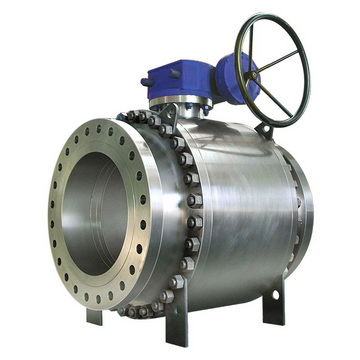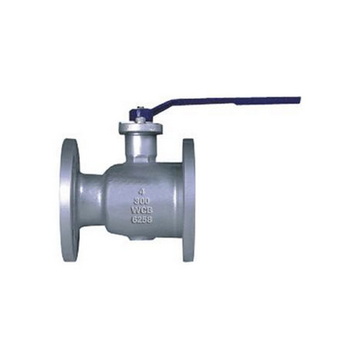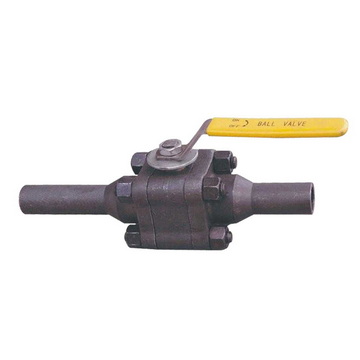Why Manual Ball Valves Are the First Choice in Emergency Shut-Off Systems
Content Menu
● Understanding the Fundamentals: What Makes a Manual Ball Valve Suited for Emergencies
● Key Performance Attributes Driving Emergency-Ready Design
● Material Choices and Construction Nuances
● OEM Design Considerations: Tailoring Manual Ball Valves for Global Brand Partners
● Operational Scenarios and Industry Relevance
>> Oil and Gas Upstream, Midstream, and Downstream
>> Sea Water Desalination and Marine Environments
>> Offshore Drilling and Heavy Industry
● Design and Manufacturing Excellence: Achieving Consistency and Reliability
● Comparative Perspectives: Manual Ball Valves vs Other Valve Types
● Installation, Commissioning, and Lifecycle Management
● A Real-World OEM Partner Story: How Customization Delivers Safety and Value
● Conclusion and Call to Action
● FAQ
>> 1. What is a manual ball valve and how does it function in emergency shut-off systems?
>> 2. What materials are commonly used for manual ball valves in demanding environments?
>> 3. How does maintenance of manual ball valves compare with other valve types?
>> 4. What sizes and pressure ratings are typical for emergency shut-off applications?
>> 5. How can OEM partnerships be structured for international brands and distributors?
Introduction
In industrial settings where safety, reliability, and speed of response are non-negotiable, the choice of shut-off components directly affects risk management, operability, and total cost of ownership. Manual ball valves play a pivotal role in emergency shut-off systems due to their straightforward operation, robust sealing, and proven track record in demanding environments. This article explains why manual ball valves are considered the first choice for rapid isolation, how design and material choices influence performance under emergency conditions, and how manufacturers with OEM capabilities can tailor solutions for oil & gas, seawater desalination, offshore drilling, and related downstream applications. The discussion integrates practical considerations—from actuation options and seat materials to installation configurations and lifecycle maintenance—to help engineering teams, procurement specialists, and brand partners make informed decisions about selecting, integrating, and qualifying manual ball valves for critical safety systems.

Understanding the Fundamentals: What Makes a Manual Ball Valve Suited for Emergencies
A manual ball valve consists of a spherical ball with a bore that aligns with or blocks the flow path as the handle is turned 90 degrees. The simplicity of this mechanism translates into several advantages in emergency contexts. First, the 90-degree turn provides a rapid, intuitive action that operators can perform under stress, reducing reliance on external power sources or complex control systems. Second, the tight shutoff capability of high-quality ball valves, especially when paired with appropriate seat materials and surface finishes, yields bubble-tight or near-bubble-tight performance in many service conditions. Third, the robust construction—often forged or precisely machined from stainless steel or other corrosion-resistant alloys—offers resilience against harsh environments, including highly corrosive media, elevated pressures, and wide temperature ranges. Finally, the modularity of manual ball valves, with a wide range of end connections, actuator compatibility, and inspection options, makes them adaptable to diverse installation footprints and maintenance regimes. These core attributes collectively position manual ball valves as a dependable first choice for emergency shut-off systems across multiple industries. The emphasis on manual operation also reduces potential failure modes associated with electrical or pneumatic actuation in hazardous or explosive environments, where intrinsic safety and electrical isolation may be critical considerations.
Key Performance Attributes Driving Emergency-Ready Design
Gendering performance into practical design requires focusing on several interdependent attributes:
- Quick isolation speed: A well-designed manual ball valve provides fast closure with minimal mechanical travel, enabling rapid stop of flow when emergency signals are issued.
- Sealing integrity: The choice of seat material (e.g., PTFE, RPTFE, or resilient elastomers compatible with the process media) and surface finish of the ball and seats influences leak-tight performance under high pressures and elevated temperatures.
- Temperature and pressure tolerance: Many service applications demand valves that maintain sealing performance across wide temperature ranges and high pressures. Material selection, heat treatment, and manufacturing tolerances all contribute to sustained performance.
- Mechanical reliability: The stem, packing, and bonnet design must resist wear, stem leakage, and external contamination, ensuring consistent operation over the valve's life.
- Human factors: Ergonomic handle design, lockout capability, and clear visual indicators help ensure reliable operation during emergencies and under routine maintenance.
- Maintenance accessibility: Designs that enable straightforward disassembly, inspection, and replacement of seals or seats without specialized equipment reduce downtime and extend the service life of the valve.
Material Choices and Construction Nuances
For emergency shut-off applications, material selection is often driven by media compatibility, corrosion resistance, and mechanical strength. Common configurations include:
- Stainless steel options (such as 304, 316, and higher alloys) offering excellent corrosion resistance and strength for offshore, chemical, and seawater environments.
- Carbon steel with appropriate protective coatings where cost considerations or project specifications permit, often paired with corrosion-resistant linings or coatings.
- Special alloys or duplex materials for highly aggressive media, high-temperature service, or environments requiring enhanced mechanical properties.
In addition to body material, seating and sealing play a critical role in performance:
- Soft seats (e.g., PTFE or elastomeric compounds) provide tight shutoff and ease of operation but may require replacement in chemically aggressive or high-temperature media.
- Metal seats or reinforced seating solutions offer higher temperature and pressure resistance and longer life in demanding environments, though they may demand more precise machining and assembly.
- Surface finishes and coatings reduce cavitation risks and improve wear resistance, contributing to reliable performance during repetitive actuation and long service life.
The stem, bonnet, and packing arrangement must also be designed to minimize leakage pathways and to accommodate maintenance without compromising safety.
OEM Design Considerations: Tailoring Manual Ball Valves for Global Brand Partners
OEM collaborations benefit from a structured approach to valve customization:
- Material customization: Offer a range of body and bonnet materials, as well as seat and seal options, to suit specific process fluids and corrosivity.
- Connection flexibility: Provide multiple end-connection standards (flanged, wafer, threaded) and valve sizes to fit existing pipelines and equipment footprints.
- Actuation compatibility: While the core remains manual, compatibility with local or remote actuation systems (electric, pneumatic) can be included for hybrid configurations or future upgrades.
- Certification and traceability: Maintain rigorous material traceability, manufacturing records, and third-party certifications to meet international standards and customer audit requirements.
- Surface treatment and coatings: Apply field-appropriate coatings (e.g., epoxy, fusion-bonded coatings) to extend service life in aggressive environments such as offshore platforms or seawater desalination facilities.
- Quality assurance: Implement comprehensive testing regimes, including hydrostatic, seat leak, and life-cycle tests to validate performance under the specified service conditions.
- Documentation and support: Provide installation guides, maintenance schedules, spare parts lists, and technical support in multiple languages to facilitate global deployment and aftermarket services.
Operational Scenarios and Industry Relevance
Oil and Gas Upstream, Midstream, and Downstream
- Offshore platforms and subsea systems demand valves that operate reliably in challenging environments where maintenance access is limited and failure consequences are high.
- Emergency shut-off systems require quick, unequivocal isolation of flow to protect personnel and equipment, and manual ball valves can deliver both speed and reliability under these conditions.
- OEM collaborations enable tailored solutions for corrosive fluids, high pressures, and elevated temperatures while ensuring compatibility with existing control architectures and safety systems.
Sea Water Desalination and Marine Environments
- Desalination plants present aggressive media and challenging saltwater exposure. Ball valves with corrosion-resistant bodies and compatible seals offer extended lifetimes, reducing total cost of ownership.
- In marine settings, components must withstand chloride-induced corrosion, biofouling, and dynamic mechanical stresses; robust manual ball valve designs help ensure dependable operation with minimal maintenance demands.
Offshore Drilling and Heavy Industry
- The demanding operating conditions of offshore drilling platforms require valves that resist harsh chemical exposure, facilitate rapid shut-off, and perform reliably under vibration and sand-laden environments.
- OEM programs can deliver tailored manufacturing tolerances and supply chain support to align with project schedules and regulatory expectations.

Design and Manufacturing Excellence: Achieving Consistency and Reliability
A rigorous approach to design and manufacturing is essential for emergency-ready manual ball valves:
- Precision machining: Tight tolerances ensure minimal play, consistent sealing engagement, and repeatable operation across the valve's lifetime.
- Surface processing: Finishes and coatings reduce wear, improve corrosion resistance, and enhance ease of cleaning in challenging media.
- Valve testing: Hydrostatic tests, seat leak tests, and fatigue assessments under representative conditions verify performance before shipment.
- Assembly integrity: Secure packing, robust bonnet designs, and proper lubrication (where applicable) reduce the risk of leakage and ensure smooth operation.
- Quality control documentation: Clear traceability and testing records support customer audits and regulatory compliance.
- Aftermarket support: Availability of spare parts and readily accessible technical support improves uptime and customer satisfaction.
Comparative Perspectives: Manual Ball Valves vs Other Valve Types
In emergency shutdown contexts, the choice among valve types hinges on performance attributes, maintenance considerations, and lifecycle costs:
- Ball valves vs gate valves: Ball valves offer faster actuation and lower torque requirements for full shut-off, which is advantageous in quick-response emergency scenarios.
- Manual ball valves vs globe valves or butterfly valves: While other valve types may offer specific flow characteristics, ball valves commonly provide tight shutoff and compact design, which is valuable in space-constrained installations.
- Stainless steel versus carbon steel constructions: Stainless configurations deliver superior corrosion resistance in aggressive media, while carbon steel can be a cost-effective option with proper coatings and maintenance planning.
- Soft-seat versus metal-seat configurations: Soft seats deliver tight shut-off with lower torque demands at moderate temperatures, whereas metal seats excel in high-temperature or highly aggressive service.
Installation, Commissioning, and Lifecycle Management
- Site readiness: Prior to installation, verify material compatibility, pressure ratings, and connection standards to prevent mismatches that could compromise emergency performance.
- Commissioning: Include functional testing under simulated emergency conditions to confirm rapid actuation, seal integrity, and leak-tight performance.
- Maintenance planning: Establish preventive maintenance intervals focused on seal replacement, packing integrity, and stem/stem- packing wear checks.
- Lubrication strategies: Where applicable, apply appropriate lubricants or greases to moving components to minimize friction, wear, and stick-slip phenomena.
- Documentation: Provide service lifetime estimates, inspection checklists, and replacement part recommendations to support predictable maintenance planning.
A Real-World OEM Partner Story: How Customization Delivers Safety and Value
For international brands and distributors, a well-executed OEM program enables:
- Faster time-to-market through standardized components that can be customized with branding, labeling, and specific performance characteristics.
- Reduced total cost of ownership due to longer service life, lower maintenance frequency, and fewer unexpected failures.
- Enhanced reliability and safety with certified testing, traceability, and comprehensive after-sales support.
- Seamless integration with existing safety systems and control architectures through clear documentation, API-like interfaces for accessories, and compatibility considerations.
Conclusion and Call to Action
Manual ball valves are uniquely positioned to meet the stringent demands of emergency shut-off systems in high-stakes environments. Their combination of quick actuation, robust sealing, material adaptability, and OEM-friendly customization makes them the first choice for safeguarding people, assets, and processes across oil and gas, seawater desalination, and offshore drilling applications. For brand partners and distributors seeking tailored solutions, collaboration can deliver precisely engineered manual ball valves that align with project specifications, regulatory requirements, and maintenance philosophies. Interested parties are invited to consult for customized valve solutions, technical support, and comprehensive OEM programs that cover material selection, certification, manufacturing lead times, and after-sales service. Contact us to start a conversation about how your next emergency shut-off system can be strengthened with high-performance manual ball valves designed for reliability, safety, and long-term value.

FAQ
1. What is a manual ball valve and how does it function in emergency shut-off systems?
Answer: A manual ball valve uses a pivoting ball with a bore to block or permit flow when the handle is turned 90 degrees. In emergency shut-off systems, this design enables rapid isolation of flow, providing a straightforward and reliable method to halt operation and protect personnel and equipment.
2. What materials are commonly used for manual ball valves in demanding environments?
Answer: Common materials include stainless steel alloys (such as 304 and 316), carbon steel with protective coatings, and specialized alloys for high-temperature or highly corrosive media. The choice depends on media compatibility, corrosion resistance, mechanical strength, and service temperature.
3. How does maintenance of manual ball valves compare with other valve types?
Answer: Manual ball valves typically offer straightforward maintenance due to their simple geometry and modular components. Regular inspection of seals, packing, and the stem, along with occasional replacement of seats or gaskets, can extend service life with minimal downtime.
4. What sizes and pressure ratings are typical for emergency shut-off applications?
Answer: Sizes commonly range from small bore to large-diameter configurations depending on system requirements, with pressure ratings selected to match service conditions. OEM partners can customize ratings to align with project specifications and safety standards.
5. How can OEM partnerships be structured for international brands and distributors?
Answer: OEM partnerships can be arranged with options for private labeling, branding, customized materials, tailored performance specs, dedicated production scheduling, and after-sales support. Clear documentation, quality certifications, and scalable supply chains are essential to meet global deployment needs.
Hot tags: Manual Ball Valves for Emergency Shut-Off, Emergency Shut-Off Systems, Why Choose Manual Ball Valves, Ball Valves for Safety Systems, Manual Ball Valves in Critical Applications, Best Shut-Off Valves for Emergencies, Manual Ball Valve Safety Features, Emergency Shut-Off Valve Performance, Advantages of Manual Ball Valves, Manual Valves for Critical Shutdown